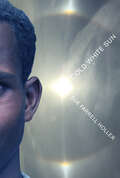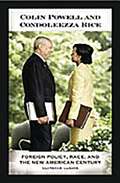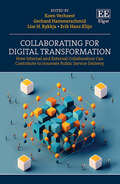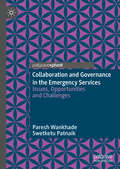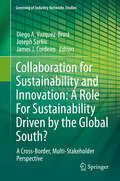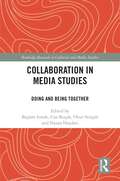- Table View
- List View
Cold Waters: Tangible and Symbolic Seascapes of the North (Springer Polar Sciences)
by Markku Lehtimäki Arja Rosenholm Elena Trubina Nina TynkkynenThis book addresses the Arctic and the northern regions by exploring cold waters and northern seascapes. It focuses on cultural discourses and artistic representations concerning the human experience and imagination of how the Arctic Ocean has been explored and used. It aims to assess what is specific to the northern waters vis-à-vis other sea and water areas in the world. The contextual background is provided by the fundamental shift from terra-based thinking towards aqua-based thinking, including the histories of the northern waters and the innovative ocean studies of the last decades. This book will be of interest to readers in Arctic studies and Sea and Ocean studies (including those with interests in literature, history, cultural and film studies, anthropology and politics), Environmental History and Cultural studies as well as in Russian studies. The book has been assembled with a view towards upper-level undergraduate and post-graduate students and scholars and will also be appropriate for courses in the fields mentioned above. The book will be of interest to specialists working in and with Arctic environmental issues. There is a broad array of international academic networks, environmental, governance and cultural associations outside academia whose members may also find the book of interest.
Cold White Sun
by Sue Farrell HollerA stranger-than-fiction story based on the real-life experiences of a young boy who was smuggled out of Ethiopia amid political unrest to start a new life from nothing in Calgary, Alberta.Tesfaye lives behind the safe walls of his family’s compound in Addis Ababa, Ethiopia. His father is an important man, Tesfaye goes to one of the best schools in the city, his mother and older sisters keep him fed and cared for. He and his beloved brother, Ishi, can spend their time playing soccer, racing chickens and spying on the guests — as long as they stay away from the sharp horns of the family’s goat and avoid their father’s fiery temper.When rebel forces take over the capital, life becomes more complicated. Tesfaye’s father’s cousin takes him to live in the former imperial palace, and Tesfaye becomes the most favored son. His father takes him along when he gives political speeches and distributes leaflets. It is all very exciting, even if Tesfaye doesn’t pay attention to what the leaflets actually say.And then suddenly his father is arrested, and Tesfaye’s own life is in peril. His mother sends him into hiding in her father’s village, until even that is too dangerous. Tesfaye is put in the care of a human smuggler and embarks on an uncertain, confusing and terrifying journey through Kenya, Europe and finally to Canada, where he is put on a Greyhound bus with ten dollars and instructions to stay on the bus until someone tells him to get off. You are safe now, says the smuggler. You are in Canada. This country will protect you.And so begins his new life in North America, sheltered for a while by fellow expats, threatened by the authorities, shunted from a group home to foster care. But through it all he is plagued by confusion and grief, wondering whether he will ever know what has happened to the family he left behind.Key Text Featuresauthor’s notemaphistorical contextCorrelates to the Common Core State Standards in English Language Arts:CCSS.ELA-LITERACY.RL.6.6Explain how an author develops the point of view of the narrator or speaker in a text.
The Coldest Coast: The 1873 Leigh Smith Expedition to Svalbard in the Diaries and Photographs of Herbert Chermside (Historical Geography and Geosciences)
by Grenna MuseumThis book describes the 1873 voyage of the British explorer Benjamin Leigh Smith, based on the diaries and photographs of Lieutenant Herbert C. Chermside, who joined the expedition of the seas around Svalbard. Chermside’s photographs, long believed lost, have recently been uncovered in Sweden and are being curated there by the Grenna Museum. The three unpublished diaries of Herbert Chermside were lent to the Scott Polar Research Institute in 1939 by Mrs. Benjamin Leigh Smith. For the first time, Chermside’s diaries are published in their entirety, with the original photographs shown alongside modern images of the same locations. This includes the first photographic record of the north coast of Svalbard, images that are today being used as comparative data for the study of climate change in the archipelago.The diaries have been fully transcribed and edited. Introductory chapters are included, written by specialists in the history of exploration, history of science, and the history of photography from Penn State University, the University of Gothenburg, and UiT, the Arctic University of Norway, as well as contributors from the UK and Germany.This volume is published in association with Grenna Museum, which will present Chermside’s photographs in a 2022 exhibit on Leigh Smith and A.E. Nordenskiold.
Colette's Republic: Work, Gender, and Popular Culture in France, 1870-1914
by Patricia A. TilburgIn France’s Third Republic, secularism was, for its adherents, a new faith, a civic religion founded on a rabid belief in progress and the Enlightenment conviction that men (and women) could remake their world. And yet with all of its pragmatic smoothing over of the supernatural edges of Catholicism, the Third Republic engendered its own fantastical ways of seeing by embracing observation, corporeal dynamism, and imaginative introspection. How these republican ideals and the new national education system of the 1870s and 80s - the structure meant to impart these ideals - shaped belle époque popular culture is the focus of this book. The author reassesses the meaning of secularization and offers a cultural history of this period by way of an interrogation of several fraught episodes which, although seemingly disconnected, shared an attachment to the potent moral and aesthetic directives of French republicanism: a village’s battle to secularize its schools, a scandalous novel, a vaudeville hit featuring a nude celebrity, and a craze for female boxing. Beginning with the writer and performer Colette (1873–1954) as a point of entry, this re-evaluation of belle époque popular culture probes the startling connections between republican values of labor and physical health on the one hand, and the cultural innovations of the decades preceding World War I on the other.
The Colfax Massacre: The Untold Story of Black Power, White Terror, and the Death of Reconstruction
by LeeAnna KeithOn Easter Sunday, 1873, in the tiny hamlet of Colfax, Louisiana, more than 150 members of an all-black Republican militia, defending the town's courthouse, were slain by an armed force of rampaging white supremacists. The most deadly incident of racial violence of the Reconstruction era, the Colfax Massacre unleashed a reign of terror that all but extinguished the campaign for racial equality. LeeAnna Keith's The Colfax Massacre is the first full-length book to tell the history of this decisive event. Drawing on a huge body of documents, including eyewitness accounts of the massacre, as well as newly discovered evidence from the site itself, Keith explores the racial tensions that led to the fateful encounter, during which surrendering blacks were mercilessly slaughtered, and the reverberations this message of terror sent throughout the South. Keith also recounts the heroic attempts by U.S. Attorney J.R. Beckwith to bring the killers to justice and the many legal issues raised by the massacre. In 1875, disregarding the poignant testimony of 300 witnesses, the Supreme Court ruled unanimously in U.S. v. Cruikshank to overturn a lower court conviction of eight conspirators. This decision virtually nullified the Ku Klux Klan Enforcement Acts of 1870 and 1871--which had made federal offenses of a variety of acts to intimidate voters and officeholders--and cleared the way for the Jim Crow era. If there was a single historical moment that effectively killed Reconstruction and erased the gains blacks had made since the civil war, it was the day of the Colfax Massacre. LeeAnna Keith gives readers both a gripping narrative account of that portentous day and a nuanced historical analysis of its far-reaching repercussions.
The Colfax Massacre: The Untold Story of Black Power, White Terror, and the Death of Reconstruction
by LeeAnna KeithOn Easter Sunday, 1873, in the tiny hamlet of Colfax, Louisiana, more than 150 members of an all-black Republican militia, defending the town's courthouse, were slain by an armed force of rampaging white supremacists. The most deadly incident of racial violence of the Reconstruction era, the Colfax Massacre unleashed a reign of terror that all but extinguished the campaign for racial equality. LeeAnna Keith's The Colfax Massacre is the first full-length book to tell the history of this decisive event. Drawing on a huge body of documents, including eyewitness accounts of the massacre, as well as newly discovered evidence from the site itself, Keith explores the racial tensions that led to the fateful encounter, during which surrendering blacks were mercilessly slaughtered, and the reverberations this message of terror sent throughout the South. Keith also recounts the heroic attempts by U.S. Attorney J.R. Beckwith to bring the killers to justice and the many legal issues raised by the massacre. In 1875, disregarding the poignant testimony of 300 witnesses, the Supreme Court ruled unanimously in U.S. v. Cruikshank to overturn a lower court conviction of eight conspirators. This decision virtually nullified the Ku Klux Klan Enforcement Acts of 1870 and 1871--which had made federal offenses of a variety of acts to intimidate voters and officeholders--and cleared the way for the Jim Crow era. If there was a single historical moment that effectively killed Reconstruction and erased the gains blacks had made since the civil war, it was the day of the Colfax Massacre. LeeAnna Keith gives readers both a gripping narrative account of that portentous day and a nuanced historical analysis of its far-reaching repercussions.
Colin Powell and Condoleezza Rice: Foreign Policy, Race, and the New American Century
by Clarence LusaneLusane has created a groundbreaking analysis of the intersection of racial politics and American foreign policy. This insightful work critically examines the roles played by former Secretary of State Colin Powell and current Secretary of State (and former National Security Advisor) Condoleezza Rice in the construction of U.S. foreign policy, exploring the ways in which their racial identity challenges conventional notions about the role of race in international relations.Neither Powell nor Rice consciously allowed their racial identity to substantially influence or characterize their participation in the defense and projection of U.S. hegemony, Lusane argues, but both used their racial identity and experiences strategically in key circumstances to defend Bush administration policies. This is but one sense in which their race, despite their reluctance to be seen as racial figures, is significant in relation to U.S. foreign policy.Locating Powell and Rice within the genealogy of the current national security strategy, and within broader shifts under George W. Bush, this work argues that their racial location in the context of the construction of U.S. foreign policy is symbolic, and that it serves to distract from the substantive part they play in the ongoing reconfiguration of U.S. global power. Criticism of Powell's and Rice's policies, for example, is often blunted by race. Black liberals may be reluctant to condemn them, while white liberals may be afraid criticism could be interpreted as racial bias, especially since conservatives of both races argue that such criticism is probably racist. Lusane tackles these difficult issues along with others, asking whether there is a black consensus on foreign policy and, if so, what its dimensions, driving forces, and prospects for stability are. How can a progressive alternative to the current U.S. foreign policy be realized? Are Powell and Rice merely functionaries, or did they substantially determine the direction of U.S. foreign policy? What will their legacies be?
Colin Sumner: Criminology Through the Looking-Glass (Palgrave Pioneers in Criminology)
by David MoxonThis book explores the work of criminologist Colin Sumner. It re-presents his arguments and ideas on Marxism, ideology, censure, deviance, crime, underdevelopment, social control and the media; situating them in their wider social context. Moxon argues that Sumner should be restored within the criminology discipline as a pioneer who has produced works of great theoretical sophistication and insight. By systematically considering Sumner’s entire output, the book shows how his thought involved a gradually deepening understanding of his core notion of ideological censure. His writing is also marked by a growing unease with the effects of late modern capitalism and the quagmire of censoriousness rife in the 21st century. This book makes clear that Sumner’s work was remarkably prescient, and his ideas may help up to make sense of complicated times.
Collaborate Now!: How Expertise Becomes Useful in Civic Life
by null Adam Seth LevineThose who seek change in civic life have much in common: they each bring valuable expertise to the table and need to strategize with others about what to do. That's why new collaborative relationships between diverse thinkers are essential. Yet they're difficult to form. Collaborate Now! presents a new argument about why that is, along with tools to foster them anew. As with any form of voluntary civic engagement, these relationships require time and motivation. Yet on top of that, collaborators often start off as strangers, and are uncertain about relationality: whether they'll relate to each other in ways that are meaningful and brimming with interaction. Using case studies, field experiments, interviews, and observational data, this book provides a rich understanding of the collaborative relationships needed to tackle civic challenges, how uncertainty about relationality can produce an unmet desire for them, and actionable tools to surface and meet this desire.
Collaborating Against Child Abuse: Exploring the Nordic Barnahus Model
by Susanna Johansson Kari Stefansen Elisiv Bakketeig Anna KaldalThis book is open access under a CC BY 4. 0 license. This edited collection explores the background and implementation of the Nordic Barnahus (or 'Children's House') model - recognised as one of the most important reforms related to children who are the victims of crime in the Nordic region. This book discusses both its potential to affect change and the challenges facing it. The model was introduced as a response to a growing recognition of the need for more integrated and child-centred services for children exposed to violence and sexual abuse. In the Barnahus structure, different professions work together to ensure that victimized children receive help and treatment and that their legal rights are met. This original study is organised into four broad themes: child-friendliness, support and treatment; the forensic child investigative interview; children's rights perspectives; and interagency collaboration and professional autonomy. Each themed section includes in-depth chapters from different Nordic countries, outlining and analysing the practice and outcomes of the collaborative work engaged in by Barnahus from different perspectives. The introductory and concluding chapters offer a comparative lens useful for policy and practice implementation within the Nordic welfare state context and beyond, ensuring this book has global academic and practical appeal.
Collaborating Against Child Abuse (PDF): Exploring the Nordic Barnahus Model
by Susanna Johansson Kari Stefansen Elisiv Bakketeig Anna KaldalThis book is open access under a CC BY 4.0 license.This edited collection explores the background and implementation of the Nordic Barnahus (or 'Children's House') model – recognised as one of the most important reforms related to children who are the victims of crime in the Nordic region. This book discusses both its potential to affect change and the challenges facing it. The model was introduced as a response to a growing recognition of the need for more integrated and child-centred services for children exposed to violence and sexual abuse. In the Barnahus structure, different professions work together to ensure that victimized children receive help and treatment and that their legal rights are met. This original study is organised into four broad themes: child-friendliness, support and treatment; the forensic child investigative interview; children’s rights perspectives; and interagency collaboration and professional autonomy. Each themed section includes in-depth chapters from different Nordic countries, outlining and analysing the practice and outcomes of the collaborative work engaged in by Barnahus from different perspectives. The introductory and concluding chapters offer a comparative lens useful for policy and practice implementation within the Nordic welfare state context and beyond, ensuring this book has global academic and practical appeal.
Collaborating for Change: Transforming Cultures to End Gender-Based Violence in Higher Education (Interpersonal Violence)
by Susan B. Marine, Ruth LewisIn the midst of unprecedented attention to gender based violence (GBV), prompted in part by the #MeToo movement, Collaborating for Change: Transforming Cultures to End Gender-Based Violence in Higher Education provides a groundbreaking analysis of higher education culture and how it can be transformed to eradicate GBV. This book builds on existing scholarship and practice, offering unique reflections from faculty, staff, and students about potential avenues for change that go beyond programs and policies. It recognizes the important work achieved to date on this topic but argues that transformation of cultures, rather than reform of practices, is now required. Starting from the premise that cultural change must be embedded in groups of people working together, the contributors to the book offer insights into what makes for constructive, effective collaborations between activists in universities and the wider community, as well as with university leaders, managers, and policy-makers. The volume is an interdisciplinary, international account/analysis of attempts to transform higher education cultures in an attempt to eradicate GBV. The chapters, contributed by leading scholars and practitioners in the field, span the experiences of GBV in Canada, the United States, Scotland, England, France, and India. Collaborating for Change reveals the different institutional, political, and cultural contexts in which activists, scholars, and practitioners endeavor to eradicate GBV and provides insights for others engaged in this work around the globe. The book argues that nothing short of a transformation is required to make higher education safe for all.
Collaborating for Change: Transforming Cultures to End Gender-Based Violence in Higher Education (Interpersonal Violence)
In the midst of unprecedented attention to gender based violence (GBV), prompted in part by the #MeToo movement, Collaborating for Change: Transforming Cultures to End Gender-Based Violence in Higher Education provides a groundbreaking analysis of higher education culture and how it can be transformed to eradicate GBV. This book builds on existing scholarship and practice, offering unique reflections from faculty, staff, and students about potential avenues for change that go beyond programs and policies. It recognizes the important work achieved to date on this topic but argues that transformation of cultures, rather than reform of practices, is now required. Starting from the premise that cultural change must be embedded in groups of people working together, the contributors to the book offer insights into what makes for constructive, effective collaborations between activists in universities and the wider community, as well as with university leaders, managers, and policy-makers. The volume is an interdisciplinary, international account/analysis of attempts to transform higher education cultures in an attempt to eradicate GBV. The chapters, contributed by leading scholars and practitioners in the field, span the experiences of GBV in Canada, the United States, Scotland, England, France, and India. Collaborating for Change reveals the different institutional, political, and cultural contexts in which activists, scholars, and practitioners endeavor to eradicate GBV and provides insights for others engaged in this work around the globe. The book argues that nothing short of a transformation is required to make higher education safe for all.
Collaborating for Digital Transformation: How Internal and External Collaboration Can Contribute to Innovate Public Service Delivery
As worldwide institutions acknowledge the necessity of digital, open, and collaborative governments, this timely book offers a comprehensive exploration of digital transformation, intergovernmental collaboration, collaborative governance, and public sector innovation.Collaborating for Digital Transformation highlights how collaborations between government organizations, as well as with the private sector and users, enhance digital transformation and public service innovation. Drawing from smart cities, online service platforms, eHealth and other initiatives across European countries, the book sheds light on the complexities, risks, and power dynamics inherent in these collaborations. It explores how the design, management, and leadership of these collaborations can overcome these challenges in different politico-administrative contexts. Through diverse research methods and by combining practical accounts with theoretical academic rigor, this forward-thinking book proposes a roadmap for more innovative and effective governments in the digital age.This book will enlighten students, scholars, and researchers in politics, public policy, governance, and administration. Offering practical guidance for effective collaboration, innovation, and coordination for digital transformation, it also appeals to politicians, policymakers, civil servants, and professionals. Being relevant, not only in smart city and eHealth domains, but across all policy areas, it's an indispensable resource for driving innovation and digitalization toward a more interconnected future.
Collaboration Across Boundaries for Social-Ecological Systems Science: Experiences Around the World
by Stephen G. PerzCollaboration across boundaries is widely recognized as a vital requisite for the advancement of innovative science to address problems such as environmental degradation and global change. This book takes collaboration across boundaries seriously by focusing on the many challenges and practices involved in team science when spanning disciplinary, organizational, national and other divides. The authors draw on a shared framework for managing the challenges of collaboration across boundaries as applied to the science of understanding complex social-ecological systems.Teams working across boundaries on diverse social-ecological systems in countries around the world report their challenges and share their practices, outcomes and lessons learned. From these diverse experiences arise many commonalities and also some important differences. These provide the basis for a set of recommendations to any collaborators intending to use science as a tool to better understand social-ecological systems and to improve their management and governance.
Collaboration and Governance in the Emergency Services: Issues, Opportunities and Challenges
by Paresh Wankhade Swetketu Patnaik“Globally, emergency services are witnessing a period of unprecedented uncertainty and change caused by pressure on their budgets, reduced manpower and changing patterns of demand and service delivery. Such challenges are also having huge implications on the workforce health and wellbeing. This book is a timely, well-researched addition to improve our understanding of the governance and collaboration issues in the emergency services.”Steve McGuirk, Chairman, Warrington and Halton Hospitals Trust, Former Chief Fire Officer and CEO, Greater Manchester Fire and Rescue Service“Good governance, collaboration and sound leadership are easy qualities to take for granted in the Emergency Services. However, given the increasing complexity of the challenging political and operational environments these organisations work in, it is not reasonable to assume these qualities will always emerge as a natural phenomenon. This book is a welcome addition that provides invaluable, evidence-based insights for leaders who are seeking to raise the quality of their services for both the public and their workforce alike.”Andy Newton, Immediate Past Chair, College of Paramedics and Former Paramedic Director, South East Coast Ambulance Service NHS Trust (SECAmb)This unique text provides fresh insights and understanding of the governance and collaboration issues between emergency services in a dynamic policy and organisational environment in a global world. The book offers critical insights into the theory and rationale behind the interoperability and collaboration between the emergency services and examines in detail, important themes around trust, leadership, workforce wellbeing and resilience and professional culture(s), each having great significance for the success of the interoperability and governance agenda. The chapters cover new materials, including the research conducted by the authors and are written in a style that is easily accessible. This book caters to a wide audience of researchers, academics, students, emergency services staff, leaders and public managers, both in the UK and internationally.
Collaboration and Innovation in Criminal Justice: An Activity Theory Alternative to Offender Rehabilitation (Routledge Frontiers of Criminal Justice)
by Paulo RochaDrawing on original research on community-based alternatives to offender rehabilitation, this book provides an up to date depiction of the challenges faced by front-line workers at the interface between criminal justice and welfare systems striving to address needs and provide multifaceted solutions. Using an innovative theoretical predicated on Activity Theory (AT) to dissect the problem, the book makes the case for co-created rehabilitation strategies that address the needs of offenders – which can only be achieved with the involvement of health and social welfare services as a means to provide a holistic support to individuals – and regard for the dilemmas front-line professionals face to deploy such strategies – which means shifting the top-down paradigm of policy implementation for co-created solutions. The book explores how AT can be used to help design commensurate interventions that give voice to all the interested actors involved in the rehabilitation process and providing readers with tools that help translate theory into practice. This book is essential reading for students, researcher, practitioners and other stakeholders focusing on co-created, bottom-up alternatives to imprisonment that benefit both offenders, community and the state.
Collaboration and Innovation in Criminal Justice: An Activity Theory Alternative to Offender Rehabilitation (Routledge Frontiers of Criminal Justice)
by Paulo RochaDrawing on original research on community-based alternatives to offender rehabilitation, this book provides an up to date depiction of the challenges faced by front-line workers at the interface between criminal justice and welfare systems striving to address needs and provide multifaceted solutions. Using an innovative theoretical predicated on Activity Theory (AT) to dissect the problem, the book makes the case for co-created rehabilitation strategies that address the needs of offenders – which can only be achieved with the involvement of health and social welfare services as a means to provide a holistic support to individuals – and regard for the dilemmas front-line professionals face to deploy such strategies – which means shifting the top-down paradigm of policy implementation for co-created solutions. The book explores how AT can be used to help design commensurate interventions that give voice to all the interested actors involved in the rehabilitation process and providing readers with tools that help translate theory into practice. This book is essential reading for students, researcher, practitioners and other stakeholders focusing on co-created, bottom-up alternatives to imprisonment that benefit both offenders, community and the state.
Collaboration and the Future of Education: Preserving the Right to Think and Teach Historically (Routledge Research in Education)
by Gordon Andrews Wilson J. Warren James CousinsCurrent educational reforms have given rise to various types of "educational Taylorism," which encourage the creation of efficiency models in pursuit of a unified way to teach. In history education curricula, this has been introduced through scripted textbook-based programs such as Teacher Curriculum Institute’s History Alive! and completely online curricula. They include the jargon of authentic methods, such as primary sources, cooperative learning, differentiated instruction, and access to technology; yet the craft of teaching is removed, and an experience that should be marked by discovery and reflection is replaced with comparatively empty processes. This volume provides systematic models and examples of ways that history teachers can compete with and effectively halt this transformation. The alternatives the authors present are based on collaborative models that address the art of teaching for pre-service and practicing secondary history teachers as well as collegiate history educators. Relying on original research, and a maturing body of secondary literature on historical thinking, this book illuminates how collaboration can create real historical learning.
Collaboration and the Future of Education: Preserving the Right to Think and Teach Historically (Routledge Research in Education)
by Gordon Andrews Wilson J. Warren James CousinsCurrent educational reforms have given rise to various types of "educational Taylorism," which encourage the creation of efficiency models in pursuit of a unified way to teach. In history education curricula, this has been introduced through scripted textbook-based programs such as Teacher Curriculum Institute’s History Alive! and completely online curricula. They include the jargon of authentic methods, such as primary sources, cooperative learning, differentiated instruction, and access to technology; yet the craft of teaching is removed, and an experience that should be marked by discovery and reflection is replaced with comparatively empty processes. This volume provides systematic models and examples of ways that history teachers can compete with and effectively halt this transformation. The alternatives the authors present are based on collaborative models that address the art of teaching for pre-service and practicing secondary history teachers as well as collegiate history educators. Relying on original research, and a maturing body of secondary literature on historical thinking, this book illuminates how collaboration can create real historical learning.
Collaboration for Sustainability and Innovation: A Cross-Border, Multi-Stakeholder Perspective (Greening of Industry Networks Studies #3)
by Diego A. Vazquez-Brust Joseph Sarkis James J. CordeiroA number of arguments are made by an international group of authors in this though provoking book about an understudied and socially important context. A future in which financial wealth transfers across the North-South divide from richer to poorer countries is far from sufficient for the relief of poverty and the pursuit of sustainability. Caution must be taken when growth is achieved through the liquidation of the natural wealth of poorer nations, in order to maintain a global economic status quo. Neither poverty reduction nor sustainability will ultimately be achieved. The financial collapse and social upheaval that might result will make the most recent economic downturn look trivial by comparison. What is more urgently needed instead, as argued in this book, is collaboration for sustainability and innovation in the global South, especially building on models originally developed in the South that are transferable to the North. In pursuit of a sustainable and more equitable future, the book examines such topics as Cross-Border Innovation in South-North Fair Trade Supply Chains; Potential Pollution Prevention Programs in Bangladesh; Digital Literacy and Social Inclusion in the South through Collective Storytelling and Eco-innovation at the ‘Bottom of the Pyramid’. Many of these stories and have not been told and need greater visibility. The book contributes in a meaningfully to the discussion of how innovation and sustainability science can benefit both sides in South-North innovation collaborations. It provides useful introduction to the topics, as well as valuable critiques and best practices. This back-and-forth flow of ideas and innovation is itself new and promising in the modern pursuit of a fair and sustainable future for all regions of our planet.
Collaboration in Media Studies: Doing and Being Together (Routledge Research in Cultural and Media Studies)
by Begüm Irmak Can Koçak Onur Sesigür Nazan HaydariThis volume offers new perspectives on knowledge production through various forms of togetherness. Via diverse cases of collaboration in media studies, from methodological contemplations to on‑the‑field social practices, the book proposes reflections and inquiries around collective research, media, and action.The collection rethinks how scholarly endeavours feature different ways of doing and being together, identifying new and more diverse communicative spaces, challenging dichotomies, and encouraging critical perspectives. Scholars of a variety of disciplines recontextualise collaboration beyond the very nature of conventional academic approaches, to embrace vast connotations of media studies – from actions building connections across research and practice to transdisciplinary methodologies through analogue and digital realms.This book will be an invaluable resource for scholars and post‑graduate students from various fields of media studies, who carry an interest in collaborative and collective aspects of media as practice and research, as well as those in a variety of social science disciplines, participatory action research, media sociology, audience studies, intercultural communication, qualitative research methods, and participatory communication.
Collaboration in Media Studies: Doing and Being Together (Routledge Research in Cultural and Media Studies)
by Begüm Irmak Can Koçak Onur Sesigür Nazan HaydariThis volume offers new perspectives on knowledge production through various forms of togetherness. Via diverse cases of collaboration in media studies, from methodological contemplations to on‑the‑field social practices, the book proposes reflections and inquiries around collective research, media, and action.The collection rethinks how scholarly endeavours feature different ways of doing and being together, identifying new and more diverse communicative spaces, challenging dichotomies, and encouraging critical perspectives. Scholars of a variety of disciplines recontextualise collaboration beyond the very nature of conventional academic approaches, to embrace vast connotations of media studies – from actions building connections across research and practice to transdisciplinary methodologies through analogue and digital realms.This book will be an invaluable resource for scholars and post‑graduate students from various fields of media studies, who carry an interest in collaborative and collective aspects of media as practice and research, as well as those in a variety of social science disciplines, participatory action research, media sociology, audience studies, intercultural communication, qualitative research methods, and participatory communication.
Collaboration in Social Work Practice
by Ruth GardnerNew or experienced social workers who are developing their collaborative practice will find this book to be an essential source of knowledge, skills and issues for reflection. The authors explain how practitioners in social care, health and related sectors can work more effectively together in line with current developments in policy and practice.
Collaboration in the New Life Sciences
by John N. Parker Niki Vermeulen Bart PendersIn recent years the organisation and practice of collaboration in the life sciences has undergone radical transformations, owing to the advent of big science enterprises, newly developed data gathering and storage technologies, increasing levels of interdisciplinarity, and changing societal expectations for science. Collaboration in the New Life Sciences examines the causes and consequences of changing patterns of scientific collaboration in the life sciences. This book presents an understanding of how and why collaboration in the life sciences is changing and the effects of these changes on scientific knowledge, the work lives and experiences of scientists, social policy and society. Through a series of thematically arranged chapters, it considers the social, technical, and organizational facets of collaboration, addressing not only the rise of new forms of collaboration in the life sciences, but also examining recent developments in two broad research areas: ecology and environment, and the molecular life sciences. With an international team of experts presenting case studies and analyses drawn from the US, UK, Asia and Europe, Collaboration in the New Life Sciences will appeal not only to scholars and students of science and technology studies, but also to those interested in science and social policy, and the sociology of work and organisations.

